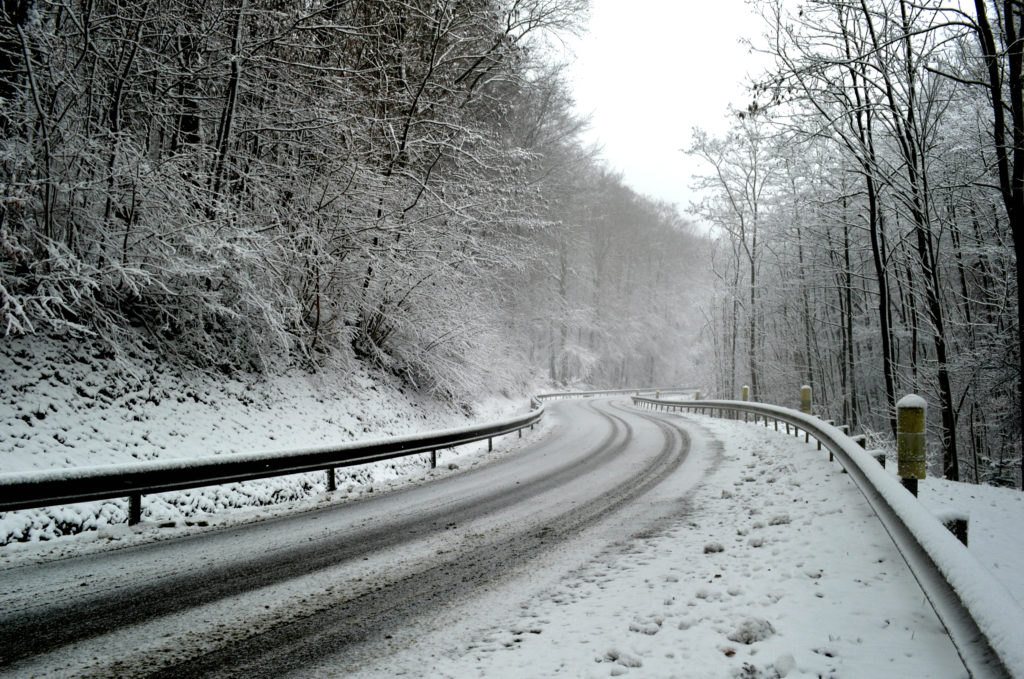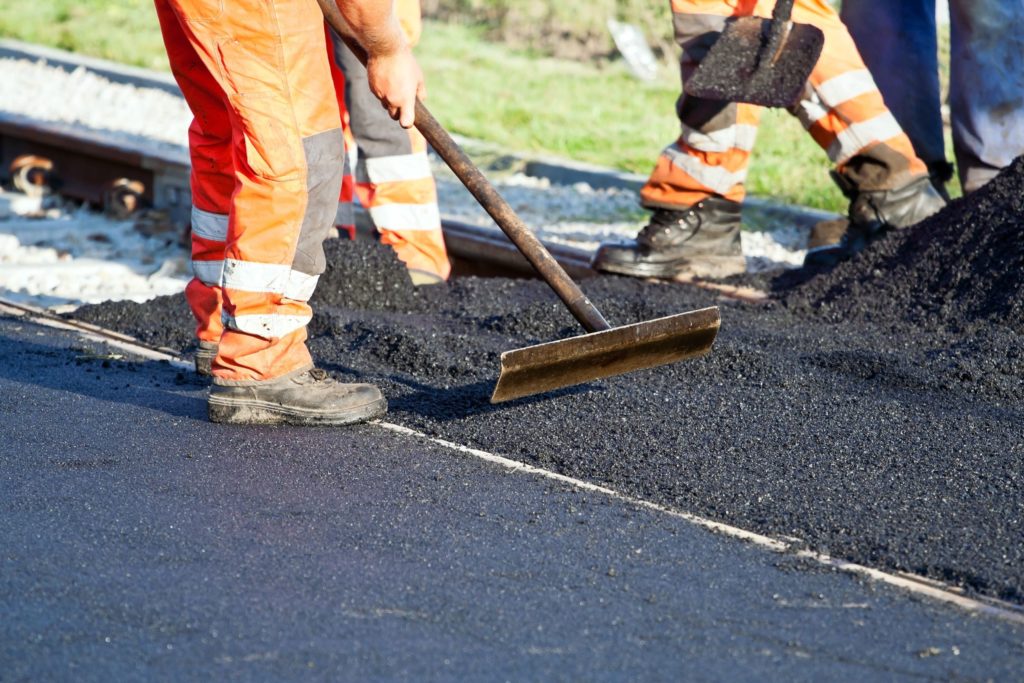Kay Ivey issues State of Emergency ahead of winter weather

In anticipation of the severe winter weather the National Weather Service (NWS) has been forecasting, Gov. Kay Ivey has declared a State of Emergency. NWS has already issued Winter Weather Advisory for a large portion of Alabama in anticipation of snow, sleet and freezing rain in and near the areas under the advisory. “All Alabamians should take time to be prepared for the potential of winter weather. I have directed essential state agencies to be on the ready should they be needed over the next couple of days,” Ivey said. “As with any severe weather event, being prepared is of utmost importance. Everyone should take the necessary precautions now and stay informed of the latest weather forecasts for their area. This State of Emergency will ensure that all available state resources are ready if and when they are needed.” In anticipation of the winter weather, Ivey has allocated the following resources to be in place starting at 6:00 a.m. Tuesday morning: Alabama Emergency Management Agency will activate the State Emergency Operations Center in Clanton The Alabama National Guard will activate soldiers to assist with mission support teams and command staff. “There are enough uncertainties in the forecast right now that the potential exists that this winter storm could be debilitating to the state for a couple of days due to icy conditions,” Ivey added. “We are strongly encouraging people to closely monitor this forecast because each portion of the state will face icy conditions at different times. It also important to factor in your commute time to ensure you are off the roads before the first flakes start falling from the sky. In addition to icy road conditions, another factor the state is dealing with is the massive flu outbreak. Now is a good time for people to plan ahead and remain weather aware.” By declaring a State of Emergency, Ivey is directing the appropriate state agencies to exercise their statutory authority to assist the communities and entities affected by the winter storm. Motorists are encouraged to use extreme caution while driving, check road conditions before departing, allow for increased travel times, and adjust arrival and departure times accordingly. Officials also urge motorists to limit travel to emergency situations only during the overnight hours of Tuesday night and early Wednesday morning, as that is expected to be an especially cold and therefore dangerous period of time. For real-time road conditions, the Alabama Department of Transportation (ALDOT) is encouraging people to visit https://algotraffic.com. The Alabama Emergency Management Agency (AEMA) is reminding Alabamians that one of the most important preparedness steps that can taken is to put together an emergency preparedness kit with a three-day supply of food, water and other critical supplies. In addition, putting together a preparedness kit for vehicles that includes a car charger, ice scraper, jumper cables and blankets. To be prepared for winter weather, the AEMA urges resident to follow the following safety guidelines: Stay indoors during the storm. Drive only if it is absolutely necessary. If you must drive: travel in the day; don’t travel alone; keep others informed of your schedule and your route; stay on main roads and avoid back road shortcuts. Walk carefully on snowy, icy, walkways. Avoid overexertion when shoveling snow. Overexertion can bring on a heart attack—a major cause of death in the winter. Use caution, take breaks, push the snow instead of lifting it when possible, and lift lighter loads. Keep dry. Change wet clothing frequently to prevent a loss of body heat. Wet clothing loses all of its insulating value and transmits heat rapidly. If you must go outside, wear several layers of loose-fitting, lightweight, warm clothing rather than one layer of heavy clothing. The outer garments should be tightly woven and water repellent. Wear mittens, which are warmer than gloves. Wear a hat and cover your mouth with a scarf to reduce heat loss. Ivey’s State of Emergency is effective at 6:00 p.m. Monday for all Alabama counties.
ALDOT releases travel advisory, urges caution on roads during holidays

The busiest travel period of the Christmas season begins Friday, and many Alabamians are hitting the roads to be with friends and family. Experts are predicting a record year-end travel volume for the 2017 holiday season, with the American Automobile Association (AAA) forecasting 107.3 million Americans taking various forms of transportation from Saturday, Dec. 23 through Jan. 1. Some reports are predicting road trips may take as much as three times longer than normal and the Alabama Department of Transportation (ALDOT) is reminding travelers to have patience and drive responsibly this holiday season. To ease holiday traffic congestion statewide and as an added safety precaution, ALDOT officials said no temporary lane closures will be made on Alabama interstates from noon, Friday, Dec. 22, through midnight, Monday, Dec. 25, and after noon, Friday, Dec. 29, through midnight Monday, Jan. 1. “During the 2016 Christmas and New Year holidays, fatalities on Alabama roads were up 44 percent over the previous year,” said Allison Green, the Drive Safe Alabama coordinator with ALDOT. “Reversing that trend in 2017 is in the hand of drivers, as they make safety a priority while out enjoying their holiday celebrations.” ALDOT’s three highway safety tips for the holidays: Drive sober. In December 2016, there were 781 people in the United States that lost their lives in drunk-driving crashes. Always wear a seat belt, including passengers in front and rear seats. The odds greatly favor those wearing a seat belt. The latest data shows that about 60 percent of Alabamians who die in vehicle crashes are not buckled up. In comparison, about 98 percent of people involved in vehicle crashes that are unharmed were reported to have been wearing their seat belts. Put away cell phones and other distractions. Drivers are 23 times more likely to be in a crash if they are texting and driving. For more safe driving tips visit the Drive Safe Alabama Facebook page.
ALDOT actively responds to winter weather statewide

The Alabama Department of Transportation (ALDOT) has crews responding across all areas of the state experiencing winter weather today due to Winter Storm Benji. Roadway and weather conditions will be monitored as long as necessary, with road and bridge treatment ongoing in affected areas. ALDOT crews will be actively working to keep State, U.S. and Interstate highways open. Currently, all highways remain open, but the public is urged to check www.algotraffic.com for alerts and road closure information, and to monitor their local news media for information about road conditions. Travel conditions could be considered hazardous in areas where there is any precipitation, whether it is snow, rain or a wintry mix. ALDOT urges everyone to avoid travel where adverse conditions are present until roadway and weather conditions improve. Reports from the National Weather Service mid-morning Friday said all city roads were closed in Talladega, and some streets in Anniston were becoming impassable, with multiple wrecks reported. For additional information, visit dot.state.al.us.
Northern Beltline construction loses funding, now competing with other state projects

Construction delays to complete Birmingham’s Northern Beltline — a 52-mile, six-lane highway that would connect Interstate 459 in Bessemer with Interstate 59 in northeast Jefferson County — continue due to loss of funding, according to AL.com. First started in 2014, beltline construction was later delayed in 2016 to loss of funding for the estimated $5.3 billion project. The Alabama Department of Transportation (ALDOT) hoped to start working on the project again in 2019, but the project, which was being funded by the Appalachian Development Highway System, was not funded in the 2018 federal transportation bill. Now, the project is going to need state funding to continue in 2019 as originally planned. “Unfortunately, adding lanes along existing, heavily congested roadways typically take a higher priority since the relative cost is so much less for relief,” Linda Crockett, spokesperson for ALDOT’s East Central Region, told AL.com. “The Northern Beltline is obviously needed but will take several years to fund and construct,” she added. “If there is a change in funding, either through an increase in gas taxes or if funds are dedicated toward the ADHS again, it may help the construction pick back up, but for the foreseeable future, it will be very limited.” One of the many projects the could compete with the beltline funding is that of the proposed, competing bridge to the Foley Beach Express down in Orange Beach. This proposed bridge could divert much needed state resources away from other critical state infrastructure projects such as the beltline. “Construction of the Northern Beltline is expected to enhance cross-region accessibility, create jobs, stimulate economic growth and respond to existing development, as well as address future traffic growth,” said BetterBeltline.org. “Birmingham is unique among U.S. urban areas because it has four interstates that converge and connect to other southeastern metropolitan areas. The Beltline touches every mainline interstate in Jefferson County and creates significant opportunities for growth and prosperity.” But if Alabama had to pay the tab on its own, the project “would never pass the idea stage,” Beth Osborne, who spent five years as a senior policy official in the Obama administration’s Transportation Department and is now at the advocacy group Transportation for America, told Environment and Energy News. ALDOT last projected the Northern Beltline should be completed in 2054. Only time will tell if Osborne is correct.
Will taxpayers statewide be on the hook for new beach bridge?

Usually, local Town Halls are primarily about issues only relevant to those in that area. That’s not always the case. An upcoming Town Hall meeting in Orange Beach is a prime example of one with statewide implications. The meeting has been called to discuss two critical subjects: first, creating an independent city school system and then what’s happening relative to bridges and roadways. It is this second conversation, which has piqued the interest of politicos and taxpayer advocates statewide. Locals are speculating that among the topics to be discussed is in what has been described as a costly and unnecessary second local bridge. The proposal many are expecting according to local sources, is a competing bridge to the Foley Beach Express. This proposed bridge would divert much needed state resources away from other critical state infrastructure projects The Town Hall, hosted by Orange Beach Mayor Tony Kennon and the City Council, is scheduled for Tuesday, Nov. 7 at Orange Beach Event Center. Both the Baldwin County Schools Superintendent Eddie Tyler and the Alabama Department of Transportation Director John Cooper will clear their schedules to be in attendance. “Director Cooper and Vince Calametti will be here from ALDOT, who will announce what’s going to happen relative to bridges and roadways,” Kennon said during Tuesday’s city council meeting. Cooper’s attendance comes at a time when both Montgomery and Birmingham are both having real highway crises. In fact, State Auditor Jim Zeigler identified the top four projects he believes ALDOT needs to tackle, including a proposal for how to pay for them, which have nothing to do to with the creating of a second bridge which he is not sure current traffic conditions calls for. Zeigler’s priorities include: Fixing the congestion on 280 in Jefferson and Shelby Counties Creating six-lanes from I-65 from Pelham petroleum tanks to Prattville Building four-lanes and upgrading “Bloody 98” in west Mobile County Completing the I-10 bridge and expansion of I-10 Bayway over Mobile Bay Cooper has a history of using his office for political purposes. In the past he admitted to halting proposals in the Yellowhammer State to retaliate against those who opposed former Gov. Robert Bentley‘s tax plan. Leaving many to wonder if his decision to prioritize a second beach bridge is another example of misplaced priorities and rewarding loyalty. The Town Hall is also prepared to discuss the Orange Beach school system. “Eddie Tyler and his staff from the county school system will be there as we discuss the new schools and the split, and answer questions as we can,” Kennon added. He is referring to the split between Orange Beach school system and Gulf Shores regarding the future of a $14.9 million new high school, which is projected to be completed by 2019. It has yet to be determined whether of Gulf Shores will break from the Baldwin County School System. Kennon is hoping for a large crowd to show state officials what locals truly think of the projects. “We need 1,200 to 1,300 people to show up,” Kennon added. “We need to make an impression on the state and on the county that it matters to us. …We need to make an impression on our new governor.” The Town Hall will begin promptly following the City Council’s 5 p.m. meeting. The public is encouraged to attend.
Daniel Sutter: Can highways be built safer?

Several serious accidents this year on a stretch of US 231 near Troy have raised the question of whether medians make highways safer. An Alabama Department of Transportation (ALDOT) spokesperson and Troy Police Chief Randall Barr disagreed about medians in a Troy Messenger story. Traffic safety research addresses questions like this, and suggests that median barriers, if not medians themselves, provide considerable safety. ADOT’s Tony Harris was quoted in the Messenger saying, “Nearly every crash is caused by driver error or driver behavior. There is only so much we can do from an engineering standpoint to compensate for that.” The contribution of driver error to almost every accident is indisputable, and is why self-driving cars offer so much promise. But the design of roads also matters. According to the Federal Highway Administration, head-on collisions are three times more severe than other accidents, and higher speeds make these collisions worse. Rural two-lane roads and highways tend to produce high speed, head-on collisions, making rural driving more deadly than city driving. Although about as many deaths occur on rural and urban roads, much more driving occurs in urban areas. And even though heavy traffic and frequent stops and starts might make us think city driving is more dangerous, rural driving has head-on collisions, drowsiness from longer trips, and longer emergency response times. Road designs clearly affect fatalities. Freeways are the safest highways, as medians and limited entrances and exits make travel safe despite high speeds. Rural highways like US 231 (arterial roads for transportation geeks) have the highest fatality rate, about three times greater than rural interstates or urban arterial roads. Developed in the 1950s, concrete median “Jersey” barriers on urban freeways illustrate how roads can be made safer. I remember these barriers being installed around Detroit in the 1970s. The angled base helps direct vehicles back onto their side of the highway. Although hitting Jersey barriers damages cars, keeping vehicles from crossing into oncoming traffic saves lives. Jersey barriers were among the safety measures which reduced traffic deaths from 50,000 annually in the 1960s to less than 35,000 by 2009, despite a tripling of miles driven nationally. Fatalities per million miles driven have fallen by eighty percent over the last fifty years. To appreciate the significance of this, at 1960s fatality rates, today’s traffic volumes would result in over 120,000 additional highway deaths per year. Determining the exact contribution of Jersey barriers to the reduction in traffic deaths, as opposed to seat belts, air bags, anti-lock brakes, and reduced tolerance of drinking and driving, is extremely difficult. Studies examining the effect of installing median barriers in North Carolina and South Carolina, though, provide reliable evidence. Cross-over fatalities fell by 90 percent, and 99 percent of vehicles veering into the median were prevented from crossing into the other lanes. North and South Carolina installed median cables, which at $55,000 per mile are far cheaper than Jersey barriers’ cost of $1 million per mile. Although Jersey barriers are sturdier, the combination of high effectiveness and low cost make median cables a better option for rural highways. Narrow grass medians may no longer be effective due to today’s higher traffic volume. The Federal Highway Authority now recommends barriers for medians less than 70 feet wide. At lower traffic volumes, grass medians provided enough stopping power for the occasional vehicle straying into the median. And the likelihood of a car which crossed the median striking a vehicle traveling the opposite direction was low. Today’s traffic volumes require barriers. Avoiding driver error is the best way to prevent accidents, but highways can be made safer. Technology creates new options, but also complicates decisions about long term safety investments. Cable median barriers may make sense today, but lane departure warnings and self-driving cars might render barriers unnecessary. Should we invest in barriers today, or wait for better technology? Sometimes I’m glad just to be offering commentary instead of making such decisions! ••• Daniel Sutter is the Charles G. Koch Professor of Economics with the Manuel H. Johnson Center for Political Economy at Troy University and host of Econversations on TrojanVision. The opinions expressed in this column are the author’s and do not necessarily reflect the views of Troy University.
ALDOT looks ahead to next 25 years of Alabama roads

Planning Alabama’s transportation future requires careful planning, setting priorities, and making sometimes-difficult choices given limited resources. Which is why the Alabama Department of Transportation (ALDOT) has begun working on the 2040 Statewide Transportation Plan (SWTP), a federally mandated assessment that will serve as a blueprint of sorts to set the state’s transportation priorities for the next 25 years. The SWTP addresses all modes of travel for passengers and freight — roadways and bridges, transit, bicycle/pedestrian, rail, aviation, and waterways. It identifies system needs, evaluates investments in infrastructure and maintenance, and compares historic and anticipated funding levels against needs. The resulting plan establishes the programs, policies, and strategies that will be the focus of the state’s efforts through 2040. On Wednesday, the project’s planning committee met in Montgomery with stakeholders and the general public to discuss thoughts about transportation priorities for Alabama. The SWTP timeline: Sept. 2016: Existing conditions, travel demand model development, and first round of regional meetings Jan. 2017: Projected 2040 conditions and existing/future needs Feb. 2017: “What if” improvement scenarios April 2017: Draft Plan and second round of regional meetings May 2017: Final Plan Have thoughts about Alabama’s transportation future? Email the study team with comments or to be added to study contact list: altransplans@dot.state.al.us.


